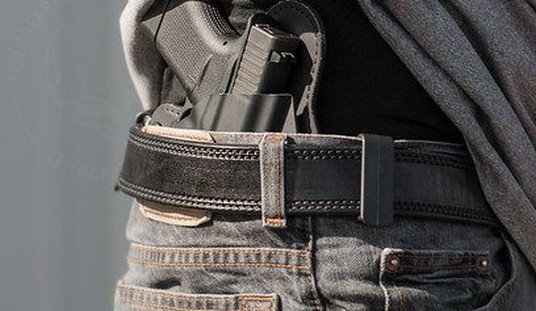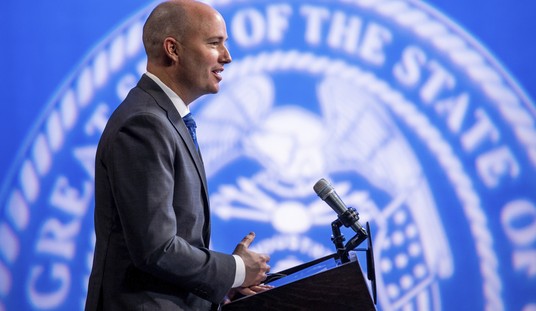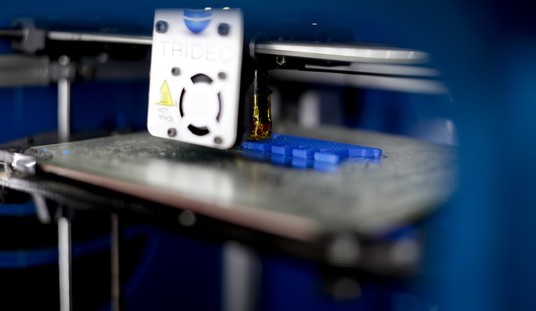“So, Bob, what kind of class were you at last week?”
That’s a common enough question from one of my neighbors when we wait for our kids to arrive home on the school bus. Usually the answer is very straightforward.
“I was at a handgun class.”
“I was at a shotgun class.”
“I was at a rifle class.”
But I couldn’t give her a simple answer that came close to encapsulating what I learned in a week at “The Evolution of Shooting.”
Organized by BixPros, “The Evolution of Shooting” was the first multi-disciplinary weapons course I’ve ever attended. The students attended three separate classes every day of the event, each helmed by a master of specific discipline. By the end of the course, every student had the ability to engage threats from contact distance to 200 yards.
CIA non-ballistic weapons expert Steve Tarani taught us how to use different kinds of knives, impact weapons, and flexible weapons for self defense. I’ll never look at a tee shirt or a scarf quite the same way again.
26-time USPSA National Champion Rob Leatham taught us to shoot handguns using a training mindset and methodology quite unlike I’ve ever experienced.
Navy SEAL Chief Chris White (Ret.) taught us to run AR-15 carbines the way “the teams” run them, all the way from basic fixed position techniques to shooting and moving with a partner around barricades and vehicles.
It was, for the lack of a better comparison, a crash course in becoming “Jason Bourne.”
This first-ever BixPros class took place at the world-famous Gunsite Academy in Paulden, Arizona, in a concierge-level event where we had catered lunches and dinners, featured speakers, and were showered by so many gifts by sponsors that most of us had to arrange boxes of items to be shipped home.
It was a great trip that I can only begin to summarize.
In the beginning
After qualifying with our weapons to get a skills baseline established for each shooter, the students were separated into three teams. I was placed in Red Team. The other two teams were Blue and Gold.
Red Team’s members had a wide range of backgrounds. In addition to doctors and dentists (whom I see at nearly every shooting class) and several law enforcement officers, Red Team had an unusually high number of very well-seasoned security experts, some of whom we were allowed to photograph, and some others we were not. I felt just a little intimidated by the guys on my team at first, but quickly found them all to be very friendly and squared away.
Red Team’s rotation was non-ballistic weapons in the morning training block with Steve Tarani, followed by pre-lunch session with Rob Leatham. After lunch, we concluded with Chief White’s carbine course and then the afternoon “hot wash” review of the day’s activity before retiring to a delicious catered dinner.
It’s probably easier to summarize what each instructor taught over the length of the week-long class than it is to discuss what we learned day-by-day.
Steve Tarani
If you’re into non-ballistic weapons, Steve Tarani is one of the best-known experts in numerous styles of close quarters fighting. While I’ve been told he’s very accomplished with firearms as well, Steve kept us focused on three common types of non-gun weapons that your likely to have nearby: knives, impact weapons, and flexible weapons, like a belt, a scarf, or a shirt.
In even moderately trained hands a knife can be a terrifying deterrent to all but the most fanatical attacker, and Steve taught us ways to use common fixed and folding knives to keep would be attackers beyond arm’s length. If they dared close within the distance, we learned basic slashes and thrusts that can incapacitate the most determined attacker by severing key muscles and nerves.
I think it’s a fairly safe assumption to make that if your average mugger attempts to attack you and then suddenly discovers that you’ve filleted his forearm from wrist to elbow, that he’ll discover that he has more pressing concerns than relieving you of your wallet.
We worked primarily with typical fixed-bladed training knives, learning position, learning where “contact distance” is (you might be surprised that it varies depending on the size of the people involved), and how to apply different techniques to efficiently apply a blade to other people in self-defense situations.
We also did a number of drills with our own pocket knives, which many people carry on a daily basis.
Our group was also exposed to the Karambit, a very interested claw-shaped blade developed in Indonesia. While regular knives (both fixed and folding blade) are useful for both slashing and thrusting, the Karambit is used for slashing, ripping, and raking attacks.

An advantage of the Karambit over a more traditional blade is that the user hooks a finger through the large ring at the end of the blade, and so it’s easier to retain and harder for the bad guy to disarm you. While a typical thrusting or overhand stabbing motion is easily understood by even the most untrained eye…

… a Karambit practitioner flows with moves that I’d almost describe as a more subtle slapping and drawing motion that almost look like an empty-hand technique.

In addition to working with blades, Tarani had us work with one of the most common weapons found in nature… sticks. While we were using uniform sections of rattan for class, the techniques we employed would work with a length of pipe, a police officer’s baton, or even a toilet plunger. Our primary focus in our training modules was on using the stick to block kicks and punches, then punching out or swinging them to strike our opponent.
After knives and impact weapons, we moved on to flexible weapons. It frankly stunned me how quickly and easily you can use a scarf, or belt or even a tee shirt to stop attacks with other weapons defensively, and use them to strip weapons. We might have been able to cover more and in more depth, but we had only five days.
I was very impressed with what I learned from Mr. Tarani, and odds are high that I’ll be seeing him again at either another BixPros event, or perhaps a dedicated class non-ballistic weapons class.

I’d also note that Steve hand-selected one of the most impressive pieces of swag handed out to the inaugural BixPros class, a Benchmade Presido folding knife.
What’s not to love?








Join the conversation as a VIP Member